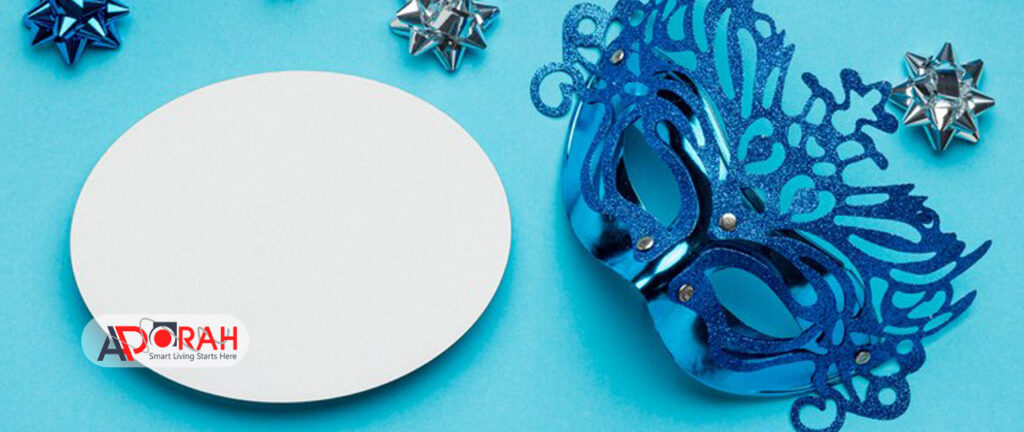How to Make a Mask With Fabric have become a necessary part of our daily lives. They help protect us and those around us from harmful germs and viruses. While disposable masks are widely available, How to Make a Mask With Fabric is an excellent alternative. It’s cost-effective, environmentally friendly, and allows for a touch of personal style. Plus, there’s something satisfying about crafting something useful with your own hands.
Materials Needed
Before you start, it’s important to gather all the necessary materials. Here’s a handy list to get you started:
- Types of Fabric: 100% cotton is a great choice, but other tightly woven fabrics can also work with Make a Mask With Fabric.
- Additional Supplies: You’ll need a sewing machine or needle and thread, scissors, a ruler or measuring tape, pins, and fabric chalk or a pencil for marking.
Choosing the Right Fabric
When it comes to selecting fabric for your Mask With Fabric, not all materials are created equal. Here are some tips:
- Cotton Fabric: This is the most recommended material due to its breathability and effectiveness in filtering particles.
- Other Suitable Fabrics: Linen and some poly cotton blends can also be used, but ensure they are tightly woven.
- Fabrics to Avoid: Stretchy, loose-knit, or synthetic fabrics like spandex and polyester are not effective for masks.
Design and Patterns
There are several mask Designs to Choose from, each with its own advantages:
- Simple Rectangular Mask: This is the easiest to make and fits most faces well.
- Pleated Mask: Offers more room for expansion and comfort.
- Fitted Mask: Provides a snug fit and is ideal for prolonged use.
Cutting the Fabric
Precision is key when cutting your fabric. Here’s how to do it:
- Measuring and Marking: Use a ruler to measure out the dimensions of your mask pieces. A standard size is 9×6 inches for adults.
- Cutting Techniques: Sharp fabric scissors are essential. Cut slowly to ensure clean edges.
Assembling the Mask
Once your pieces are cut, it’s time to put them together:
- Sewing the Pieces Together: Place the fabric pieces right sides together and sew around the edges, leaving a small gap to turn it inside out.
- Adding the Pleats: For pleated masks, create 2-3 evenly spaced pleats and pin them in place before sewing.
- Creating the Fitted Shape: For a fitted mask, follow a pattern that includes a curved seam to shape the mask to your face.
Adding Elastic or Ties
To secure the mask to your face, you’ll need elastic bands or fabric ties:
- Different Types of Elastics: Elastic bands, hair ties, or even cut-up tights can work.
- How to Make Fabric Ties: Cut strips of fabric, fold them, and sew them to create sturdy ties.
- Attaching Elastics or Ties: Sew the elastic or ties to the corners of the mask.
Creating a Nose Wire Pocket
Adding a nose wire helps the mask fit snugly around your nose:
- Why a Nose Wire is Important: It prevents gaps and keeps the mask in place.
- How to Add a Nose Wire Pocket: Sew a small channel at the top of the mask where you can insert a wire. Twist ties or pipe cleaners work well as nose wires.
Finishing Touches
The final steps ensure your Make a Mask With Fabric is durable and comfortable:
- Topstitching for Durability: Sew around the edges of the mask to strengthen the seams.
- Ensuring a Comfortable Fit: Try on the mask and make any necessary adjustments to the fit.
Decorating Your Mask
Make your Make a Mask With Fabric unique with some personal touches:
- Adding Embellishments: Sew on buttons, patches, or beads.
- Using Fabric Paints: Create fun designs with fabric-safe paints.
- Embroidery: Add a monogram or decorative stitching.
Care and Maintenance
To keep your Make a Mask With Fabric effective and safe, proper care is essential:
- How to Wash Fabric Masks: Wash in hot water with detergent after each use. Machine washing is convenient, but hand washing works too.
- Proper Storage: Store your clean masks in a dry, clean place.
Troubleshooting Common Issues Make a Mask With Fabric
Here are solutions to some common problems you might encounter:
- Fit Problems: Adjust the elastic or ties to ensure a snug fit.
- Breathability Issues: Use thinner layers of fabric if the mask feels too thick.
- Mask Durability: Reinforce seams if they start to fray.
Benefits of Homemade Make a Mask With Fabric
Making your own Make a Mask With Fabric comes with several perks:
- Cost-Effectiveness: Using scrap fabric or repurposing old clothes saves money.
- Customization: Tailor the mask to fit your style and needs.
- Environmental Impact: Reusable masks reduce waste compared to disposable ones.
Conclusion
Making a fabric mask is a rewarding and practical skill. It not only provides protection but also allows you to express your creativity. With the right materials and a little bit of time, you can create a Mask That Is Both Functional And Fashionable.
FAQs
- What is the Best Fabric for Masks?
- 100% cotton is highly recommended for its breathability and filtering capabilities.
- How Often Should I Wash My Mask?
- Wash your mask after each use to ensure it stays clean and effective.
- Can I Use Any Fabric I Have at Home?
- Not all fabrics are suitable. Stick to tightly woven materials like cotton for the best protection.
- Do Fabric Masks Really Protect Against Viruses?
- While not as effective as medical-grade masks, fabric masks can reduce the spread of germs when used properly.
- How Can I Make My Mask Fit Better?
- Adjust the elastic or ties and consider adding a nose wire for a snug fit.



